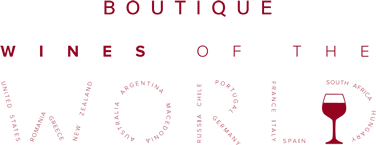Audio
The earliest recorded mention of Merlot (under the synonym of Merlau) was in the notes of a local Bordeaux official who in 1784 labeled wine made from the grape in the Libournais region as one of the area’s best.
In 1824, the word Merlot itself appeared in an article on Médoc wine where it was described that the grape was named after the local black bird (called Merlau in the local Occitan language) who liked eating the ripe grapes on the vine. Other descriptions of the grape from the 19th century called the variety lou seme doù flube (meaning “the seedling from the river”) with the grape thought to have originated on one of the islands found along the Garonne river. By the 19th century it was being regularly planted in the Médoc on the “Left Bank” of the Gironde. After a series of setbacks that includes a severe frost in 1956 and several vintages in the 1960s lost to rot, French authorities in Bordeaux banned new plantings of Merlot vines between 1970 and 1975.
In the late 1990s, researchers at University of California, Davis showed that Merlot is an offspring of Cabernet Franc and is a half-sibling of Carménère, Malbec and Cabernet Sauvignon. The identity of the second parent of Merlot wouldn’t be discover till the late 2000s when an obscure and unnamed variety, first sampled in 1996 from vines growing in an abandon vineyard in Saint-Suliac in Brittany, was shown by DNA analysis to be the mother of Merlot.
This grape, later discovered in front of houses as a decorative vine in the villages of Figers, Mainxe, Saint-Savinien and Tanzac in the Poitou-Charentes was colloquially known as Madeleina or Raisin de La Madeleine due to its propensity to be fully ripe and ready for harvest around the July 22nd feast day of Mary Magdalene. As the connection to Merlot became known, the grape was formally registered under the name Magdeleine Noire des Charentes.
Through its relationship with Magdeleine Noire des Charentes Merlot is related to the Southwest France wine grape Abouriou, though the exact nature of that relationship (with Abouriou potentially being either a parent of Magdeleine Noire or an offspring) is not yet known. Grape breeders have used Merlot crossed with other grapes to create several new varieties including Carmine (an Olmo grape made by crossing a Carignan x Cabernet Sauvignon cross with Merlot), Ederena (with Abouriou), Evmolpia (with Mavrud), Fertilia (with Raboso Veronese), Mamaia (a Romanian wine grape made by crossing a Muscat Ottonel x Babeasca negra cross with Merlot), Nigra (with Barbera), Prodest (with Barbera) and Rebo (with Teroldego).
Over the years, Merlot has spawned on color mutation that is used commercially, a pink-skinned variety known as Merlot gris. However, unlike the relationship between Grenache noir and Grenache blanc or Pinot noir and Pinot blanc, the variety known as Merlot blanc is not a color mutation but rather an offspring variety of Merlot crossing with Folle blanche. Merlot grapes are identified by their loose bunches of large berries. The color has less of a blue/black hue than Cabernet Sauvignon grapes and with a thinner skin and fewer tannins per unit volume. It normally ripens up to two weeks earlier than Cabernet Sauvignon. Also compared to Cabernet, Merlot grapes tend to have a higher sugar content and lower malic acid. Ampelographer J.M. Boursiquot has noted that Merlot has seemed to inherit some of the best characteristics from its parent varieties—it fertility and easy ripening ability from Magdeleine Noire des Charentes and its color, tannin and flavor phenolic potential from Cabernet Franc.






Reply